As with most things we grow we have to go to take extra measures to insure proper growth, especially this early. First of all we’re in an hoop house. It’s not heated other than the soil heating cable you see here.

Then we add some bone meal.

Then we add a little soil to cover the heating cables.

Then plant the bulbs, in this case lily bulbs. Water as needed and keep the temperature 55-65 for 16 weeks and then, magic. I am keeping half of the bulbs to plant in a couple of weeks to try and sequence the harvest.


For those of you unfamiliar with the term “high tunnel”, this is what we call the unheated plastic covered hoop houses that many would refer to as greenhouses. Among growers, greenhouses typically have automated heating and/or cooling thus differentiating them from the more simple high tunnels. High tunnels are one of our primary tools to extend the growing season in our less than ideal climate.
During the winter months, especially during or after a snow storm the high tunnels take on a true “tunnel” form.
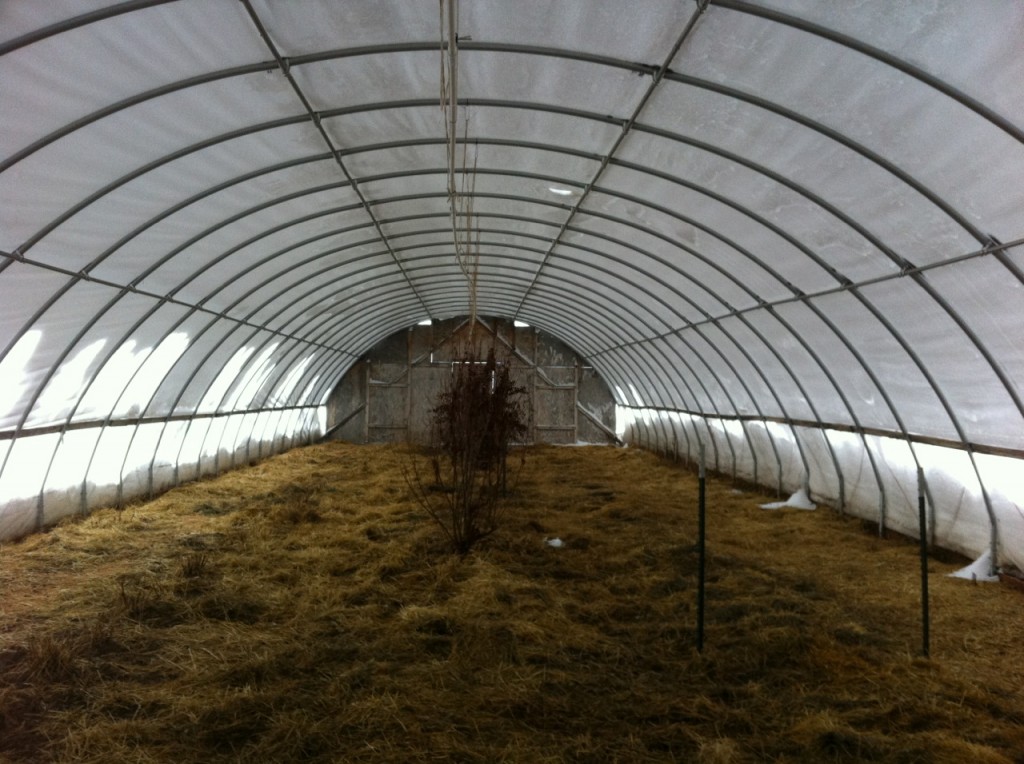
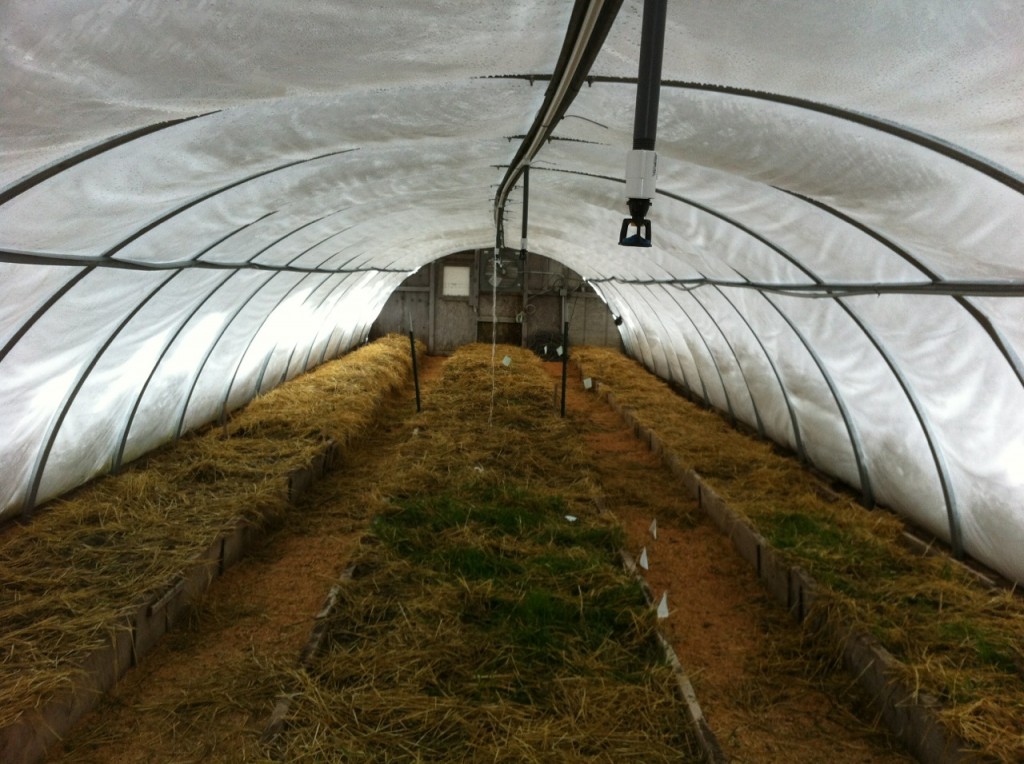
We haven’t had green grass for a few weeks now, so when the chickens and turkeys discovered the volunteer barley growing in the high tunnel they were excited! This was not planned; a combination of my combine not getting all of the grain out of the straw and me getting the straw mulch on early enough and having mild enough weather to make the barley sprout. It’s actually a great idea that I plan on continuing in the future.
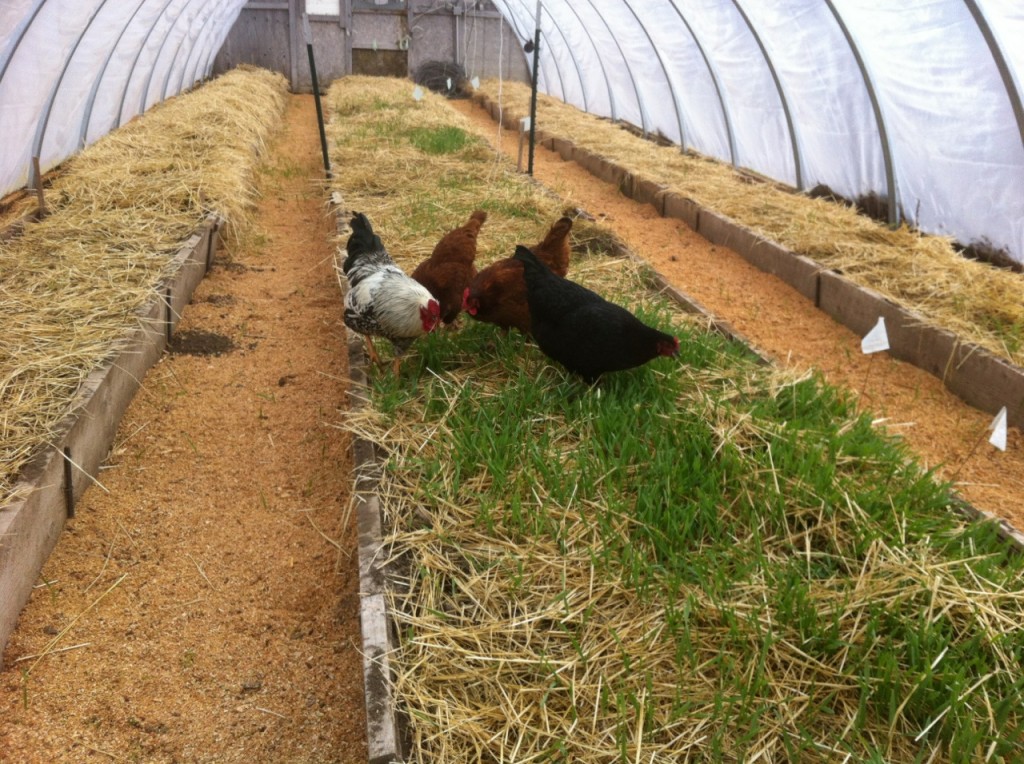
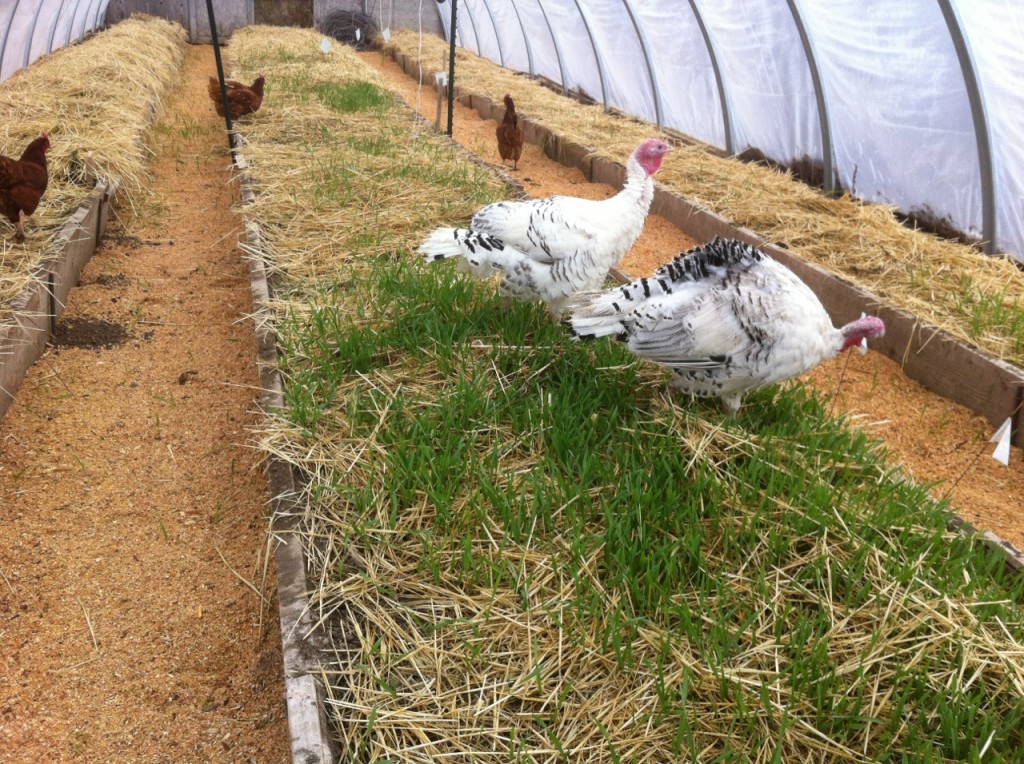
Construction on the solar greenhouse continues between other projects. We are in the middle of installing the 20 tons of rock into the base of what will be the growing beds. The perforated pipe is for delivering warm air that is distributed to the rock bed from the peak of the greenhouse where the air temperatures are the warmest. The idea is to warm up the large mass of rock during the day and have it help maintain growing temperatures during the night, a very useful arrangement in our climate.
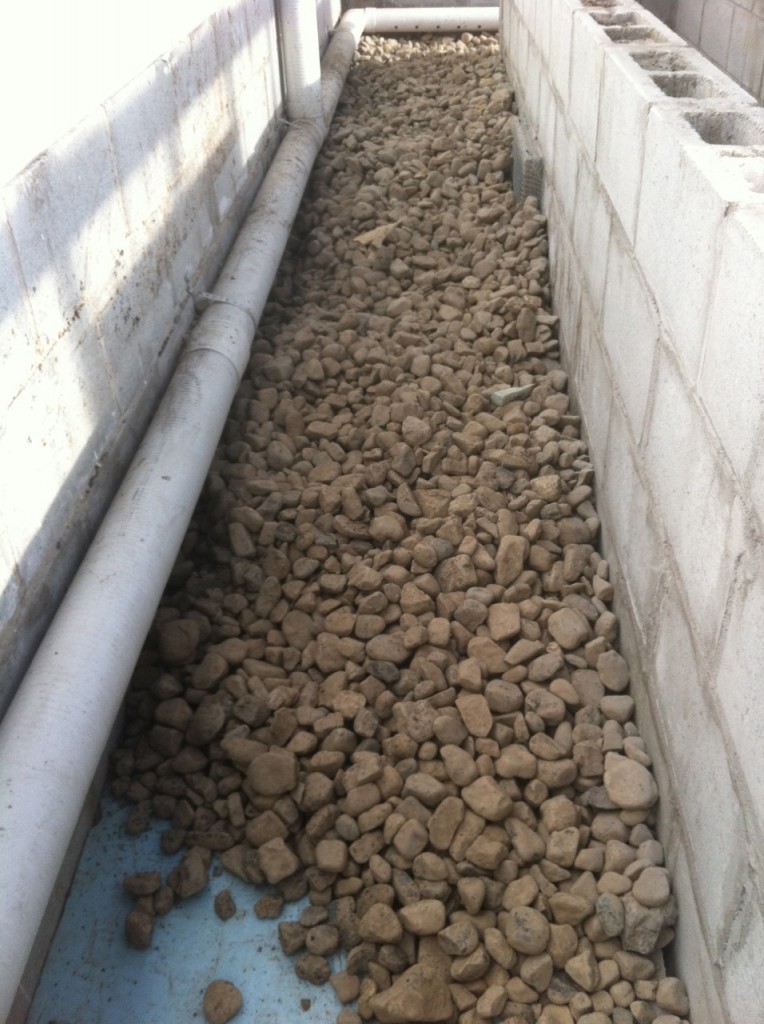
Farming at 6000 ft in the mountains of Wyoming and loving it…









